|
The coral albino boa originated
from one of Peter Kahl's original heterozygous-for-albinism (het albino) bloodlines that he produced in 1990 or 1991 (you
can read the full story on Pete's website). In short, when the het albinos from
this bloodline were bred to each other, some of the albino offspring exhibited more intense coloration than their siblings,
and had an overall lavender coral color. Their coloration continued to intensify
as they matured, and these boas came to be called coral albinos.
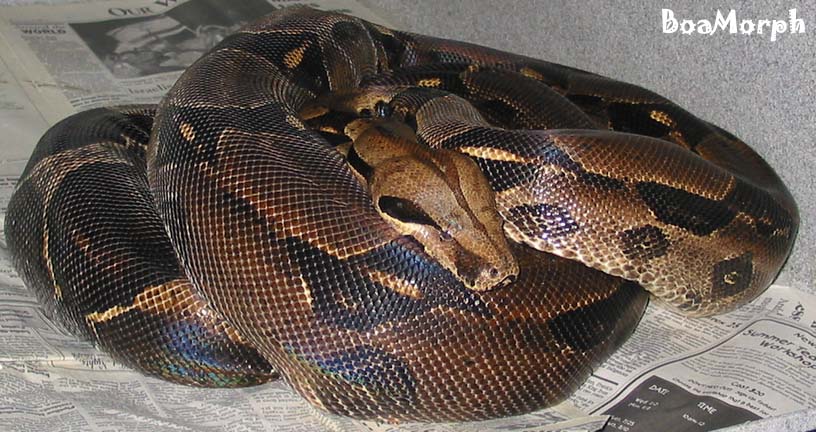
|
| Big Mama |
Our
own Groovy coral albino bloodline began with our acquisition of four 25% Suriname boas – an albino male
(later named Big Daddy) and three 66% possible het albino females – in October, 1999.
This group of four had been produced that year by breeding two 1996 Brian Sharp-produced 50% Suriname het albino males to two Colombian het albino females (Big Daddy came from
one pairing, and the three females from the other pairing). We purchased these
as regular Kahl-strain albino/het albino boas, and there was nothing in their appearance as babies nor as they matured to
make us think otherwise – the thought of them producing coral albinos never crossed our minds.
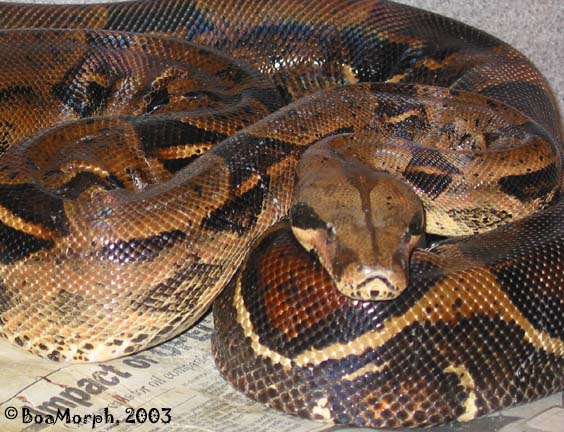
|
| Middle Mama |

|
| Little Mama |
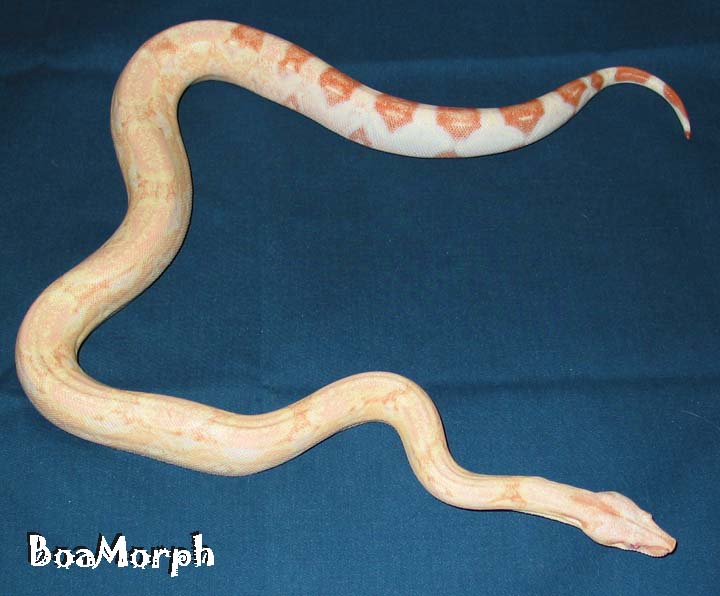
|
| Groovy Girl at 1 Year Old |
Our first litter from this
group was born on February 4, 2002 by our matriarch of the line, Big Mama. Her
litter of 23 included 8 albinos, which proved Big Mama to be a het albino (her two sisters later proved not to be het albino,
so we weren’t very lucky on the 66% possible odds, but we can hardly complain about the ultimate outcome). Of these eight albinos we decided to hold back two. We chose
these two based solely on appearance, and it just so happened that both turned out to be females. The first of these was the easy choice; she had the best color and highest contrast of all the albinos
in the litter. After making this seemingly easy decision, we were left with seven
that, with one exception, were nearly identical in color and contrast. The one
of these remaining seven that did stand out from the others did so for all the wrong reasons:
she exhibited far less color and contrast than her littermates. Nevertheless, we decided to keep this ugly duckling because she was the only one that appeared different
from the rest.
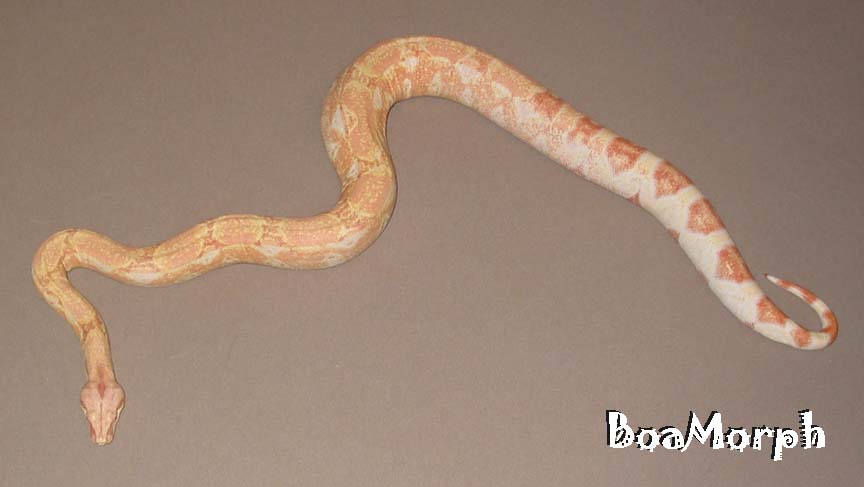
|
| Groovy Girl at 20 Months Old |
It wasn’t until shortly
before her first birthday that this ugly duckling started to show some hints that she might become much more interesting than
expected. By the time she reached 20 months of age, we knew not only that she
was a coral albino, but a very special one at that. With her ever-intensifying
colors and pattern so reminiscent of the concert posters and album covers of the psychedelia era, she soon came to be called
Groovy Girl. Somewhat sadly, her once fairer sister is now very humbly known
as Groovy’s Sister.

|
| Big Daddy on an Average Color Day |
With Groovy Girl having completed
her transformation from ugly duckling to swan, we immediately asked ourselves, “Wow, where did THAT come from?!” Big Daddy’s coloration is highly variable, and on his bad-hair days he can tend
toward the unfortunate slab-o-mozzarella look. However, when he is at his best
he exhibits many of the coral albino color and pattern characteristics. Though
we had previously considered him to be just a nice looking albino, upon closer inspection of Big Daddy and the offspring he
has sired, we have come to consider him a proven coral albino. Big Mama, while
remarkable for her size and fecundity, is rather average in coloration; a het albino herself, she is nowhere near as colorful
as most of her het albino offspring. Nevertheless, based on bloodline and the
characteristics of offspring produced, we can neither prove nor rule out the potential contribution of Big Mama and her two
sisters to the coral trait characteristics observed in their offspring. Future
breeding trials may help to further clarify the presence or absence of the coral trait in these three boas.
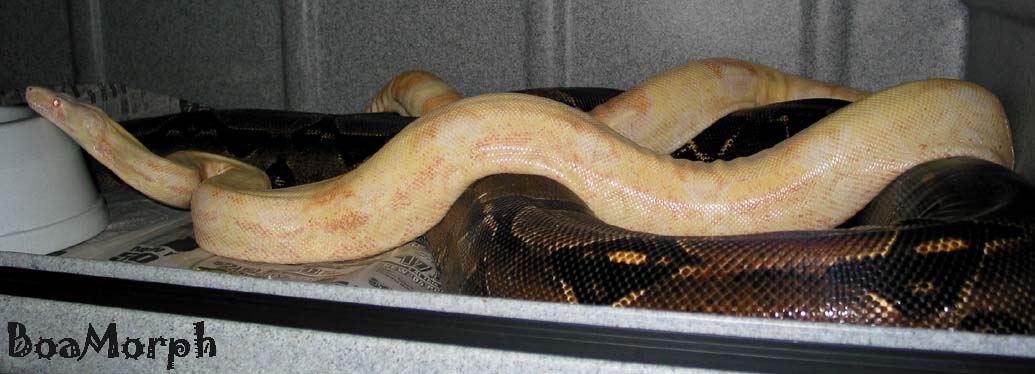
|
| Big Daddy at his Finest |
|

